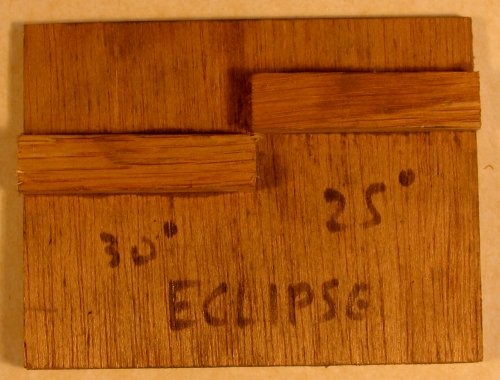bexupnorth
Established Member
- Joined
- 13 Jul 2011
- Messages
- 52
- Reaction score
- 1
Hi All,
I hope this doesn't spark the usual round of arguments, but I have a problem with my sharpening technique.
I've decided to give freehand sharpening the time and effort it deserves as it makes sense to me to do the little and often thing rather than spending a whole weekend sharpening almost dead tools, which is what seems to happen at the moment. Please don't recommend I go back to honing as I want to focus on something for once instead of chasing some holy grail that doesn't exist. I know honing works, but I want to try the flexibility and speed that freehand seems to offer.
Anyhoo, I've bought a couple of half decent stones and seem to be getting the knack with chisels and sort of with planes. The problem is my planes are clearly sharp, but only seem capable of cutting in one direction. I've never experienced this before so can only assume it's something to do with my technique.
I'm working in pine (tests on hardwoods are not as susceptible to the problem) and with a piece in the vice, I can either take a lovely shaving off in one direction or the plane skids off the top of the work piece like the blade isn't protruding at all. Sometimes it'll catch and take off a shaving, but once the work is nearing flat I'm back to nothing again. It won't touch knots and performance is poor on plywood.
This is with a plane that was working just great when sharpened using a honing guide.
Any ideas?
I hope this doesn't spark the usual round of arguments, but I have a problem with my sharpening technique.
I've decided to give freehand sharpening the time and effort it deserves as it makes sense to me to do the little and often thing rather than spending a whole weekend sharpening almost dead tools, which is what seems to happen at the moment. Please don't recommend I go back to honing as I want to focus on something for once instead of chasing some holy grail that doesn't exist. I know honing works, but I want to try the flexibility and speed that freehand seems to offer.
Anyhoo, I've bought a couple of half decent stones and seem to be getting the knack with chisels and sort of with planes. The problem is my planes are clearly sharp, but only seem capable of cutting in one direction. I've never experienced this before so can only assume it's something to do with my technique.
I'm working in pine (tests on hardwoods are not as susceptible to the problem) and with a piece in the vice, I can either take a lovely shaving off in one direction or the plane skids off the top of the work piece like the blade isn't protruding at all. Sometimes it'll catch and take off a shaving, but once the work is nearing flat I'm back to nothing again. It won't touch knots and performance is poor on plywood.
This is with a plane that was working just great when sharpened using a honing guide.
Any ideas?


































